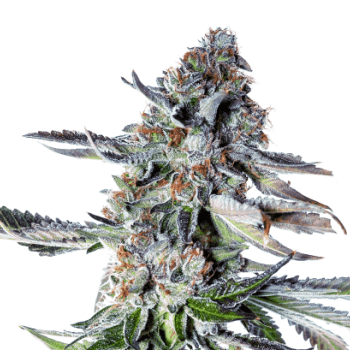

A History of Cannabis Strain Genetics And Marijuana Strains
Published: July 25, 2022
While more and more of the country is making medical marijuana legal, there is surprisingly little knowledge about its origins and where this plant came from. Today, many strains of cannabis are available, all of which serve various kinds of purposes. In this blog post, we explore the genetics of cannabis and the different varieties that have branched out since its discovery.
A History of Cannabis
Cannabis, also known as marijuana, has been long used by humans throughout history. In the beginning, most cultures of the time didn’t grow the plant to induce a “high” feeling, but as a herbal medicine throughout Asia during 500 BC. The plant continued to evolve throughout Central Asia before it was introduced to Europe, Africa, and the Americas.
In America, cannabis cultivation started with the early colonists, who needed to grow hemp for rope and textiles. Hemp fiber was used in making clothes, sails, paper, and food. Because this plant grows quickly and is easy to cultivate, it grew widely around colonial America. By the 1600s, colonies in Massachusetts, Virginia, and Connecticut required their farmers to grow marijuana.
How Cannabis was First Used
According to archaeological and genetic evidence, the first known use of cannabis was around 12,000 years ago. This took place during the early Neolithic period in East Asia, where the use of cannabis as a mind-altering drug was documented by prehistoric societies in both Africa and Eurasia. During the 3rd century AD, cannabis smoke was inhaled by Daoists in China, who would burn them in incense burners.
The Genetics of Cannabis
Marijuana strains will either come out pure or hybrid, but will always come from the plant genus Cannabis, which encompasses the three species: C. indica, C. sativa, and C. ruderalis. Different varieties are created to intensify select characteristics of a plant, to make a different strain for marketing purposes, or to make a more effective drug. The name of the variety will generally be given by their growers, and will often refer to the plant’s properties, such as smell, taste, color, or origins.
The two most commonly grown species of Cannabis are Cannabis sativa and Cannabis indica. However, the third species, Cannabis ruderalis, only produces trace amounts of tetrahydrocannabinol (THC), so it's not commonly grown. Pure sativa plants can grow to be as tall as 4.5 meters with long branches and internodes and narrow and large leaves.
Pure indica plants are bushier and shorter along with wider leaflets, which are often the preferred choice for indoor growers because of their compact size. Indicas will also bloom faster than sativas, where there will often be a 2-month gap in between them. While experts may think that the effects between these two are different, the tetrahydrocannabinol (THC) to cannabidiol (CBD) ratio in these drug varieties is similar, with an average of 200:1.
Creating Existing and New Strains of Cannabis
To breed a new strain of cannabis, a female plant needs to be pollinated with male pollen, which can happen through selective breeding inside a controlled environment. When cannabis needs to be cultivated for medicinal or psychoactive properties, the males will often be separated from the females. The pollen that males produce is often gathered and stored until it's needed.
Breeders can create an F1 hybrid by using the pollen on one male to pollinate a female of a different strain, where the offspring won't be identical to the parents. Hermaphrodite plants will never be able to produce male-only seeds — female-only seeds can carry this trait. However, they will be able to keep both parents' characteristics, where repeated breeding can result in particular characteristics becoming more consistent.
Strains of the Cannabis Plant
Cloud Cover breeders have created exclusive, award-winning strains of cannabis, which have all been bred to their highest potential. They also give each strain they make memorable and unique names to help differentiate them from competitor strains. Find the most suitable for you below:
Examples of Marijuana Strains
Alien Pie Strain
This strain is a cross between Alien Kush F2 and Cherry Pie tastes like sweet berries with a hint of cream and is a true indica.
Boo Berry Strain
The Boo Berry strain is what you get when a Concord Crunchberry is crossed with a Columbia County Orgy plant, resulting in this hybrid indica.
Frozen Dessert Strain
This hybrid indica mixes the aroma of cookie dough with gassiness and is a cross between OZ Kush BX2 and Ice Cream Cake.
High Octane Guava Strain
Created by mixing White Hot Guava #14 with Apple Fritter, the High Octane Guava strain exhibits a fruit, sweet, and earthy aroma for you to enjoy.
Jonagold Strain
The Jonagold strain is a hybrid indica that’s bred in-house by crossing Columbia County Orgy with Apple Tartz, resulting in a great combination of smells.
Mac Truck Strain
Learn How Weed Strains Are Made
The Mac Truck strain is a hybrid indica made from the combination of Head Gasket and MAC that has a hint of menthol along with gassy and kushy flavors.
Cannabis Genetics in the Future Cannabis Strain Genetics
Mutation breeding techniques can be used to develop new strains through chemical mutagens (like colchicine) or irradiation. Some companies experiment with genetic engineering techniques to create new cannabis strains. In this way, the evolution of marijuana can be secured far into the future.
